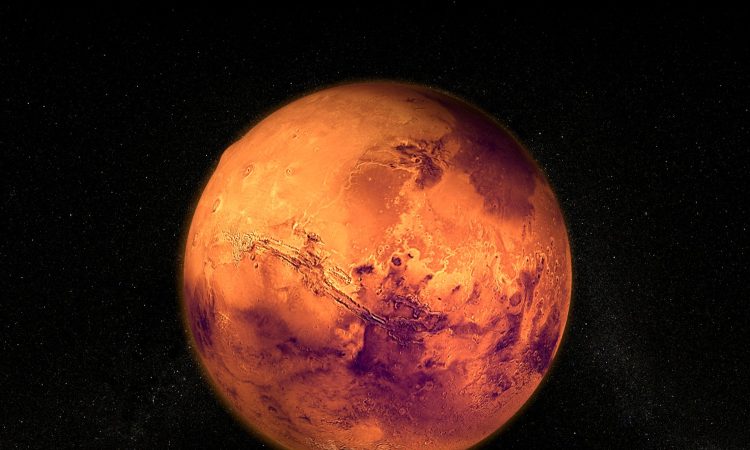
Unlike the other planets in the Solar System, Mars is distinctly triaxial, meaning that it is an ellipsoid with different dimensions along its three axes.
A long-lost satellite could explain why Mars is so different from the other rocky planets in the Solar System.
“Mars currently has two small satellites. But early in its history, the Red Planet may have had a much larger satellite, which could be responsible for the odd shape and,” suggests Michael Efroimsky, an astronomer at the US Naval Observatory in Washington, DC
Mars is home to some of the most extreme terrain in the Solar System, including the largest canyon, tallest mountain, and largest mountainous region. This mountainous region, known as the Tharsis Bulge or Tharsis Rise, dominates the western hemisphere of the planet Mars near the equator.
The Tharsis region is about 5,000 kilometers wide and rises up to 7 km, excluding the massive shield volcanoes, which rise even higher. Almost exactly on the opposite side of the planet from Tharsis are Terra Sabaea and Syrtis Major, another mountainous region and a massive shield volcano, respectively.
Mars is distinctly triaxial
Either way, Nerio’s significant mass modified it through its gravity, raising tides in the magma oceans in the same way that Earth’s Moon raises tides in our planet’s oceans today. But because Mars is smaller than Earth, it cooled much faster, and its tidal bulges got stuck in the resulting planet shape.
Somehow, Nerio got lost, Efroimsky wrote. It could have been destroyed by a collision, leaving behind Mars’ current moons, Phobos and Deimos, he proposed, or it could have been scattered outside the Solar System by a gravitational interaction with another body, he writes.
Such collisions and scatters were common in the early solar system. Astronomers believe that Earth got its Moon from a collision with a Mars-sized protoplanet, and the scattering of the outer planets shifted their original orbits, which were once much closer to the sun, to their current positions.
“But as long as Nerio stuck around long enough to deform Mars as it cooled, it could have set the stage for the dramatic landscape of this planet,” Efroimsky said. Later geological processes could have continued the work, raising the heights and leading to the strange shape of the planet Mars.
Mars has two small satellites
While the possibility is interesting, Efroimsky admitted that Nerio’s explanation is only a hypothesis. The idea of a large, briefly held satellite raises many questions, particularly about its formation and eventual demise. For example, if Nerio was destroyed, it should have left a series of craters along the belt that would line up with its orbit, but there is no such series of craters. On the other hand, subsequent collisions and geological activity could have erased these traces.
In addition, the hypothesis assumes that geological processes transformed the improvements and deformations initiated by Nerio into their current forms by raising the original heights even higher. While it is reasonable to assume that the heating and cooling processes would naturally exaggerate any distortions of the planet’s shape, this is not guaranteed.
Efroimsky invited other researchers to evaluate the idea and see if there are ways to look for evidence of this lost world.

